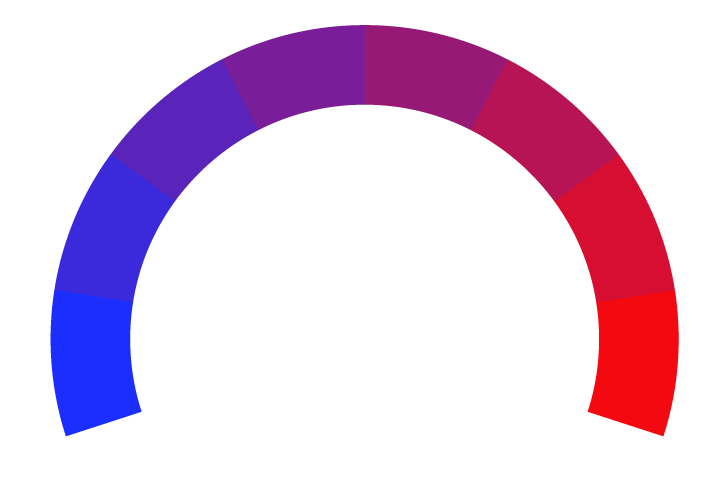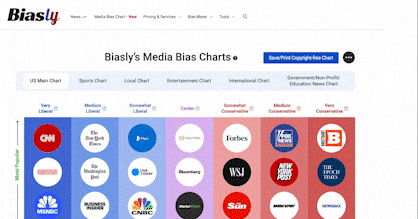Opportunities and Challenges of Brazil-China Trade under the Impact of US Tariffs
- Bias Rating
- Reliability
15% ReliableLimited
- Policy Leaning
-50% Medium Left
- Politician Portrayal
16% Positive
Continue For Free
Create your free account to see the in-depth bias analytics and more.
By creating an account, you agree to our Terms and Privacy Policy, and subscribe to email updates.
Bias Score Analysis
The A.I. bias rating includes policy and politician portrayal leanings based on the author’s tone found in the article using machine learning. Bias scores are on a scale of -100% to 100% with higher negative scores being more liberal and higher positive scores being more conservative, and 0% being neutral.
Sentiments
17% Positive
- Liberal
- Conservative
| Sentence | Sentiment | Bias |
|---|---|---|
Unlock this feature by upgrading to the Pro plan. | ||
Reliability Score Analysis
Policy Leaning Analysis
Politician Portrayal Analysis
Bias Meter
Extremely
Liberal
Very
Liberal
Moderately
Liberal
Somewhat Liberal
Center
Somewhat Conservative
Moderately
Conservative
Very
Conservative
Extremely
Conservative
-100%
Liberal
100%
Conservative

Contributing sentiments towards policy:
56% : For example, in October 2024, Brazil implemented a new tax policy, canceled the original favorable policies, and imposed tariffs and anti-dumping duties on many goods from China.54% : At the same time, within the framework of their strategic cooperative relationship as a community of shared destiny, China and Brazil have signed agreements or memorandums of cooperation in various sectors, including agriculture and livestock, agricultural products and technology, mineral energy, bio-economy, ecological transformation, green development, digital economy, artificial intelligence, and the photovoltaic industry.[3]These developments have significantly advanced bilateral economic and trade relations, benefiting technology companies that provide innovative solutions for fundamental industries such as mining and agriculture, as well as for consumer electronics, represented by smart terminals and smart homes, and digital technologies, including new energy vehicles, artificial intelligence, and e-commerce.
54% : The main aspects of China-Brazil bilateral trade in 2024 are outlined below: Table 2: Comparison of China-Brazil Economic and Trade Advantages 2.2.1 Brazil's Core Exports to China: Soybeans, Oil, Meat, and Ore According to China's General Administration of Customs, China's total imports from Brazil in 2024 amounted to RMB 825.84 billion (USD 116.09 billion), down 4.4% from the previous year.[6]
53% : The United States' influence over the Panama Canal also introduces a degree of uncertainty into China-Brazil trade. 3.2.2. .Brazil's Industrial Policy Brazilian economy has strong state influence, which balances the private sector interests, the political and social agendas.
50% : The two sides have a large space for industrial cooperation and complementary advantages, do not compete in the international market on their exports, nor have conflicting interests in the geopolitical agenda, and this is unlikely to change in the next several decades 3.1.1 Policy Advantages With the integration of the Belt and Road Initiative and Brazil's development strategy, China and Brazil have signed a series of cooperation memoranda in areas such as economy, trade, finance, science and technology, infrastructure and environmental protection, providing policy support for the expansion of bilateral trade.
45% : Over the past decade, bilateral trade between China and Brazil has maintained an impressive average annual growth rate of 10%, despite the overall downturn in global trade.
40% : The major milestones in the bilateral relationship are as follows: Over the past two years, economic and trade cooperation between China and Brazil has entered a new phase.
36% : The deepening cooperation between China and Brazil reflects the inherent dynamics of global trade.
*Our bias meter rating uses data science including sentiment analysis, machine learning and our proprietary algorithm for determining biases in news articles. Bias scores are on a scale of -100% to 100% with higher negative scores being more liberal and higher positive scores being more conservative, and 0% being neutral. The rating is an independent analysis and is not affiliated nor sponsored by the news source or any other organization.






















 Lexology
Lexology